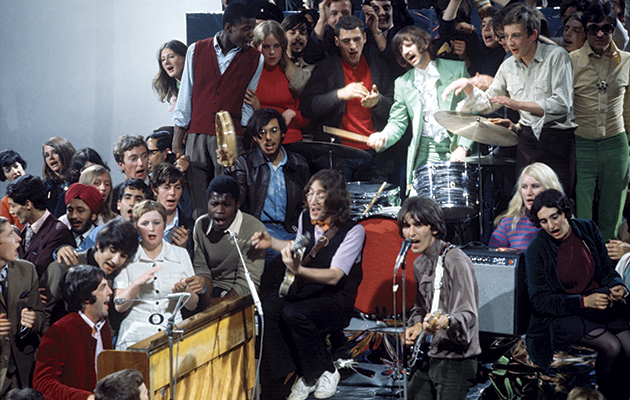At the very beginning, the way the Beatles looked was as important as the way they sounded. It was impossible to separate the scrubbed Merseybeat rhythm guitar and the sweet-and-sour two-part harmonies from the lengthening forward-combed hair and the black polo-necks. A compilation of their promo films and other significant bits of video enables us to fast-forward through evidence of the huge changes they underwent, individually and collectively, in those crowded eight years together.
The 27 short films on 1, a single CD/DVD, and the further 23 on 1+, a double set, all with restored visuals and remastered sound, also invite the viewer to speculate on precisely when each member of the group was at his aesthetic peak. Any conclusions are likely to be subjective, but here are mine. George, with the advantage of the best hair and cheekbones, most perfectly incarnates the basic Beatle look early on, around the time of “A Hard Day’s Night” (which appears on the single disc in the form of a performance in June 1965 at the Palais des Sports in Paris). By May 1966, when they mime to “Rain” in the gardens of Chiswick House, Ringo has added an interesting layer of mature introspection to his lovable goofiness. John’s look for the “Penny Lane” video, shot in February 1967, features the combination of droopy moustache, reefer jacket, striped college scarf and granny specs that would become de rigueur for the more intellectual types on the barricades in Paris 15 months later. Paul’s full beard, worn on the Apple roof concert in January 1969, reduces the familiar winsomeness and signals his new healthy outdoor grown-up life with Linda.
The visual shifts and nuances are endlessly fascinating as the protagonists merge and separate and reconvene in a parade of evolving preoccupations and changing loyalties. Nothing is more affecting than the promo clip for “Something” put together in October 1969, blending footage of the four couples: Paul and Linda gambolling with Martha, the celebrity Old English sheepdog, on the Mull of Kintyre; Ringo and Maureen on a pair of monkey bikes in their garden; George and Patti exchanging moonstruck gazes at home in Esher; John and Yoko gliding down the steps of Tittenhurst Park in long black capes, as if on their way to a black mass. The Beatles’ life together is coming apart, along with the stockbroker-belt existence that was the default domestic setting when the money started flowing in.
Very little of this selection of clips involves actual live performance (“From Me to You” at the 1963 Royal Variety Performance is among a handful of exceptions). Most of it is mimed, including a marvellous “Twist and Shout” for Granada TV’s Scene At 6.30 show in August 1963, in which the anonymous director creates the bold high-contrast black and white iconography that would turn up three months later on the cover of With the Beatles.
The obvious stuff includes Peter Goldmann’s magnificent “Strawberry Fields Forever” film and “All You Need Is Love” from the One World international telecast. The “Come Together” animation created in 2000 for the launch of thebeatles.com is one of the few duds. For capturing their essence, nothing betters the group of songs – here represented by “Day Tripper”, “I Feel Fine”, “We Can Work It Out”, “Ticket to Ride” and “Help!” – filmed by Joe McGrath in a single day at Twickenham Studios in November 1965. As Ringo rides an exercise bike positioned where the drum kit should be and John sings while gobbling fish and chips out of a newspaper, the last pretence of fidelity to stage performance falls away, the victim of their world-changing disinclination to observe the old rules.
The colour restoration is immaculate and the audio tracks benefit immensely from new stereo mixes by Giles Martin and Sam Okell, although the 5.1 surround version is excessive: the Beatles never sounded as pristine, as glistening, as that. It’s the equivalent of using the film restoration team to make visual repairs to Paul’s chipped front tooth, John’s NHS fillings and George’s decaying molars, which feature in the early clips and, when exposed on the Ed Sullivan Show, must have contributed significantly to the average American’s scornful view of British dentistry.
Uncut: the spiritual home of great rock music.



